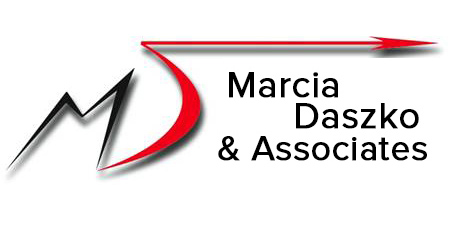Marcia's Leadership Q and As: Ten Traits AI Leaders Need in the Future Workplace
/Q. With the rapid revolution of AI in organizations, what traits do leaders need to emphasize or develop for the AI workplace?
A. In the future AI-driven workplace, leaders must shift to more adaptive, systems-thinking leadership. The following traits will be critical to thrive and lead effectively in environments shaped by automation, algorithms, and accelerating change.
Strategic Curiosity times 1000. If you thought you ask a lot of questions currently, you’ve just dabbled on the surface of the depth of questions you’ll need to be asking. Leaders must be relentless questioners—exploring how AI, data, and automation can unlock new thinking, business models, efficiencies, and customer value. This means challenging the status quo, engaging with emerging technologies, and staying ahead of industry shifts or totally changing industries. Strategic curiosity drives innovation because it asks, “What if we?” and “Why not?” Future-ready leaders will embed curiosity into their culture, encouraging continual discovery and unconventional thinking across all levels of the organization.
Ethical Foresight. The future of work will demand leaders with strong ethical compasses who can anticipate and mitigate AI risks—like bias, privacy breaches, and unintended consequences. Ethical foresight means understanding not only what AI can do, but what it should do. Leaders will need to establish ethical frameworks, guide responsible innovation, and ensure decisions align with organizational values and societal trust. This trait builds the foundation for sustainable success in a tech-driven world.
Systems Thinking. In a hyperconnected AI landscape, isolated decisions can create ripple effects across supply chains, ecosystems, and cultures. Leaders must move beyond linear thinking to embrace a systems mindset, recognizing patterns, feedback loops, and the long-term impact of short-term actions. Systems thinkers connect dots across data, departments, and disruptions. They lead transformation by seeing the bigger picture and designing adaptive strategies that work across complex environments, not just within silos.
Empathy and Human-Centered Insight. In a world dominated by logic-driven machines, it is emotional intelligence and empathy that will set great leaders apart. AI cannot replace the human need to feel, or be seen, heard, and valued. Empathetic leaders listen actively, understand diverse perspectives, and design workplaces that prioritize well-being and inclusion. This is how trust is built. Trust will be the new competitive advantage. Human-centered leadership also fosters stronger customer relationships and more resilient teams.
Learning Agility. AI will transform industries faster than traditional training programs can keep up. Leaders must model learning agility: the ability to unlearn outdated beliefs, embrace new knowledge, and pivot quickly. Agile learners experiment, reflect, and grow through uncertainty. They create environments where continual development is the norm. Mistakes are reframed as data for improvement. This mindset fuels innovation and keeps organizations relevant amid constant change.
Collaboration Across Boundaries. Tomorrow’s problems won’t be solved by isolated thinkers. Leaders must foster collaboration across roles, geographies, generations, and between humans and machines. That includes breaking down functional silos, promoting knowledge sharing, and enabling co-creation across disciplines. It also means creating inclusive environments where every voice can contribute. In AI-augmented teams, collaboration becomes less about hierarchy and more about integration. Leaders who build these bridges will unlock extraordinary collective intelligence.
Courage to Experiment. The AI age rewards those willing to test, learn, and adapt. Leaders must cultivate the courage to explore the unknown, challenge assumptions, and fail forward. This means resisting the urge for perfection and instead embracing rapid prototyping, iterative learning, and bold innovation. Leaders with experimental courage encourage their teams to take smart risks and try new ideas without fear of punishment. This fosters agility, engagement, and long-term resilience.
Clarity of Purpose. In a world overloaded with data, distractions, and disruption, clarity of purpose becomes a guiding light. Leaders must define and communicate a compelling vision, one that aligns strategy, values, and behaviors. Purpose gives people meaning, focus, and a reason to innovate. It anchors decision-making and helps teams navigate ambiguity with confidence. Purpose-driven leadership attracts talent, inspires loyalty, and aligns organizations to serve something greater than short-term profits.
Resilience and Adaptive Grit. AI and automation will cause continual upheaval, eliminating jobs, creating new ones, and requiring constant reinvention. Leaders must develop personal and organizational resilience to thrive through disruption. Resilience is more than endurance; it’s about emotional fortitude, optimism under pressure, and the ability to recover quickly from setbacks. Adaptive leaders bounce forward, not just back, by learning from adversity and evolving stronger. They model steadiness, foster psychological safety, and help teams find opportunity in uncertainty.
Authentic Communication. In the AI workplace, communication must be more than transactional. It must be clear, courageous, and connective. Leaders must distill complex ideas, deliver tough messages with empathy, and ensure people feel seen and understood. Authentic communication builds trust and engagement, especially during rapid change. It also involves listening deeply, facilitating dialogue, and aligning teams around shared meaning. In a world where machines can talk, human communication must be more intentional, transparent, and real.
The successful leaders and organizations won’t use each of these traits like a checklist but will more importantly integrate them into the fabric of their culture. The road ahead is uncharted. Roadmaps can’t be used (we’re not driving from Chicago to Dallas with a map.) Where we’re going requires a Strategic Compass, so we all keep adapting and learning together. Download a copy of the Strategic Compass on my website at https://www.mdaszko.com/resources
The AI workplace will demand more human leadership, not less. The future won’t be led by those who automate the most; it will be led by those who think, listen, adapt, and act with courage. If you're a board member, executive, or team leader, it’s time to ask yourself: Which of these 10 traits are you building right now? And what will your leadership look like in a future shaped by AI?







